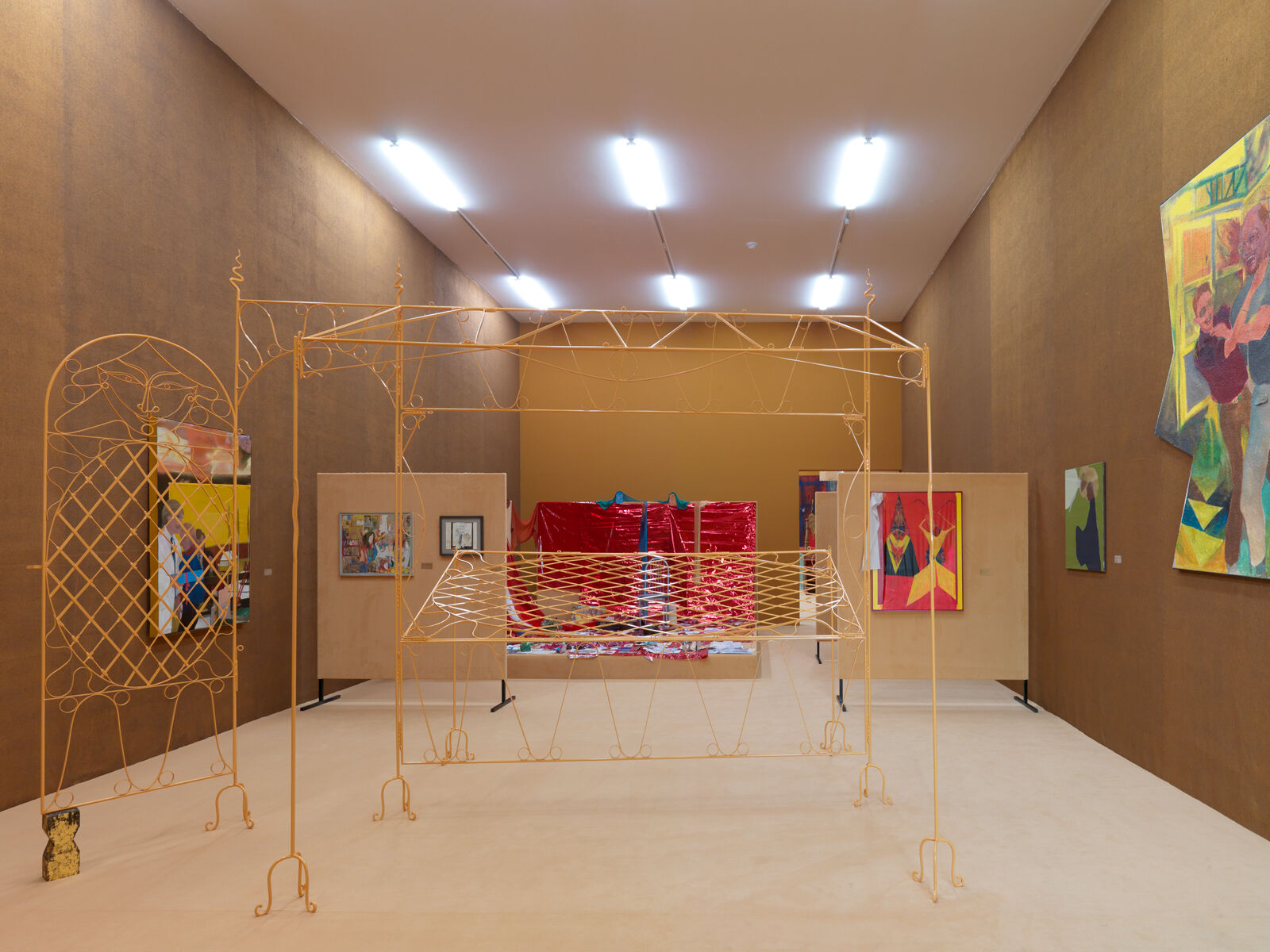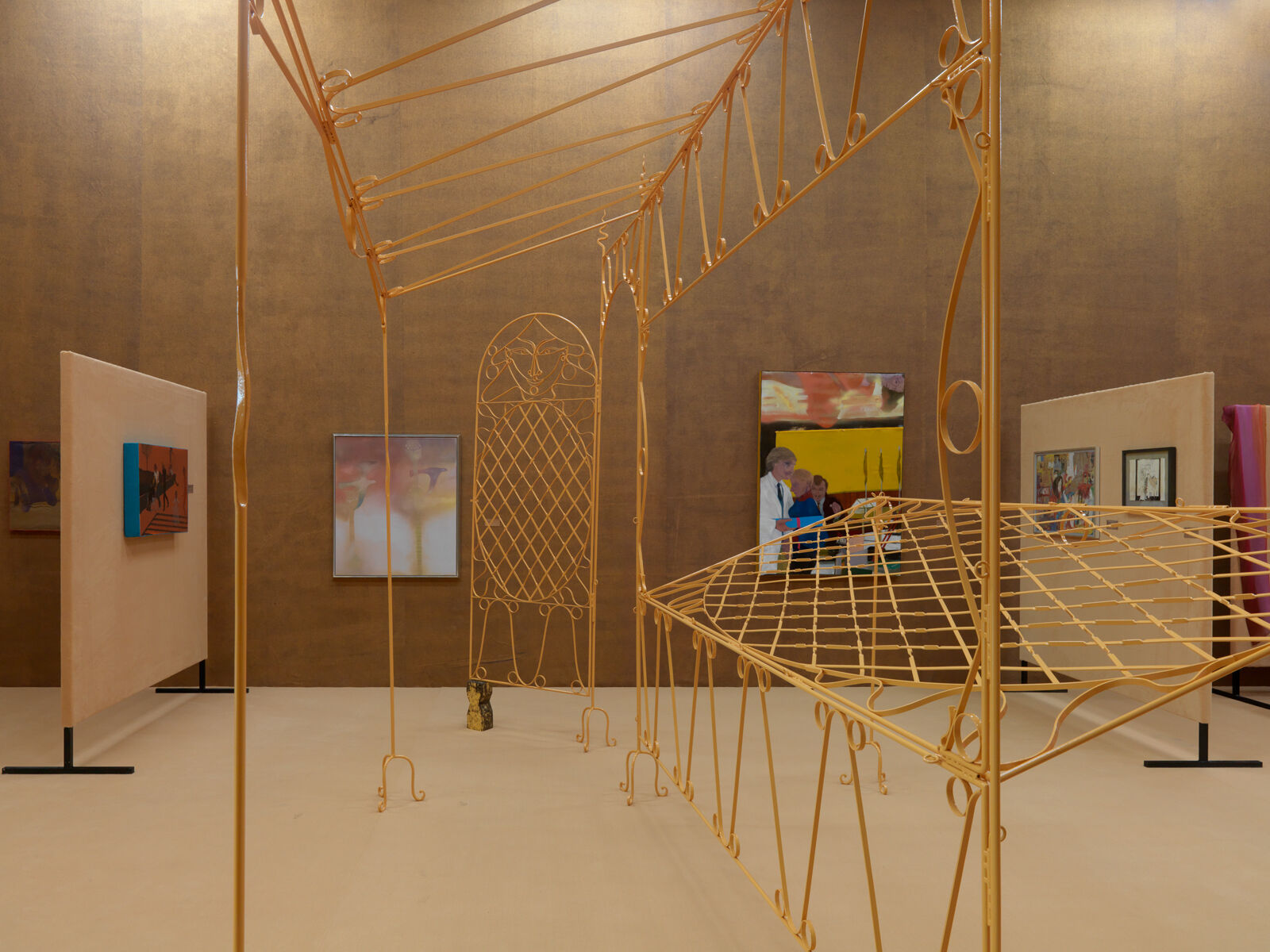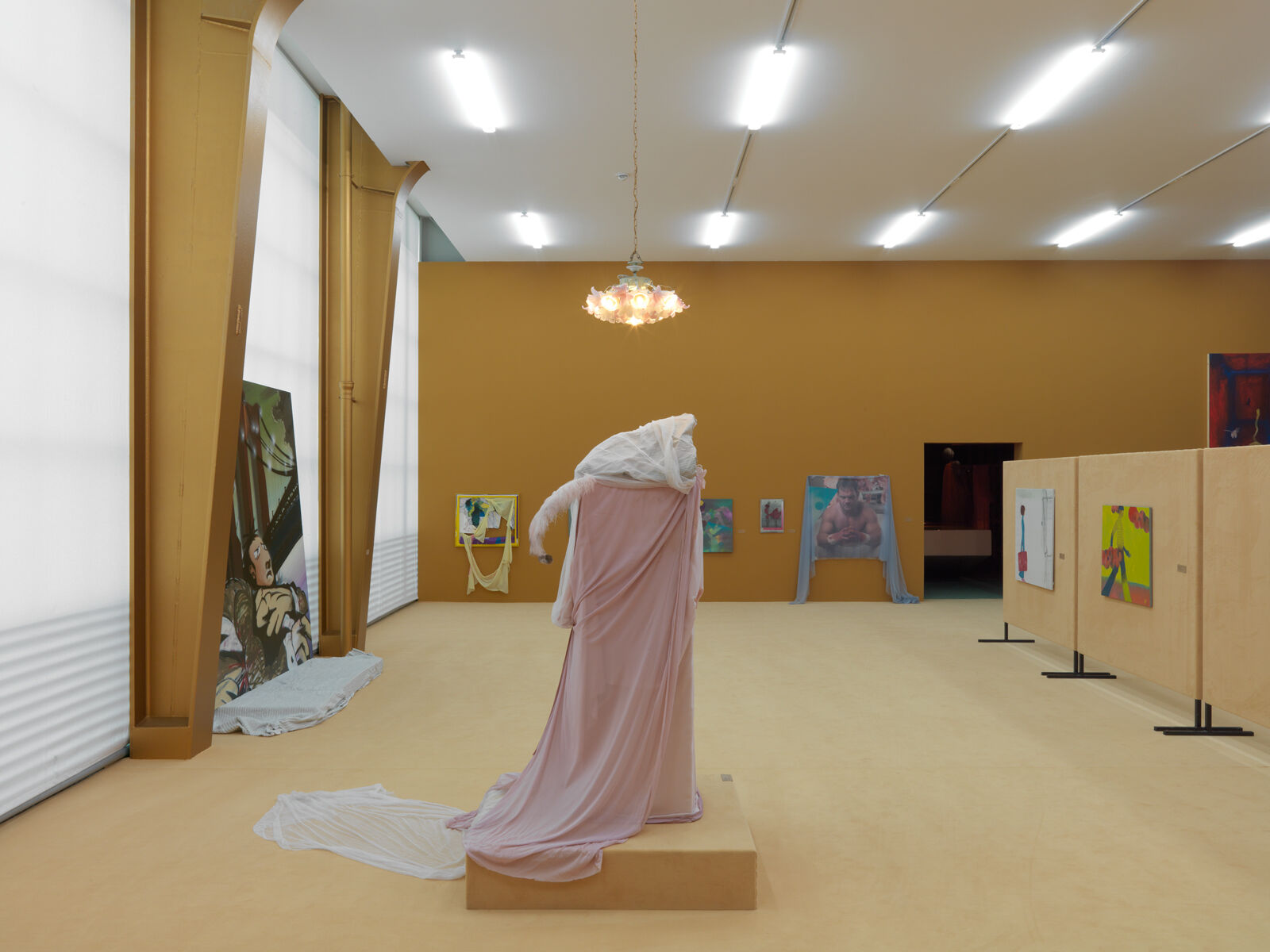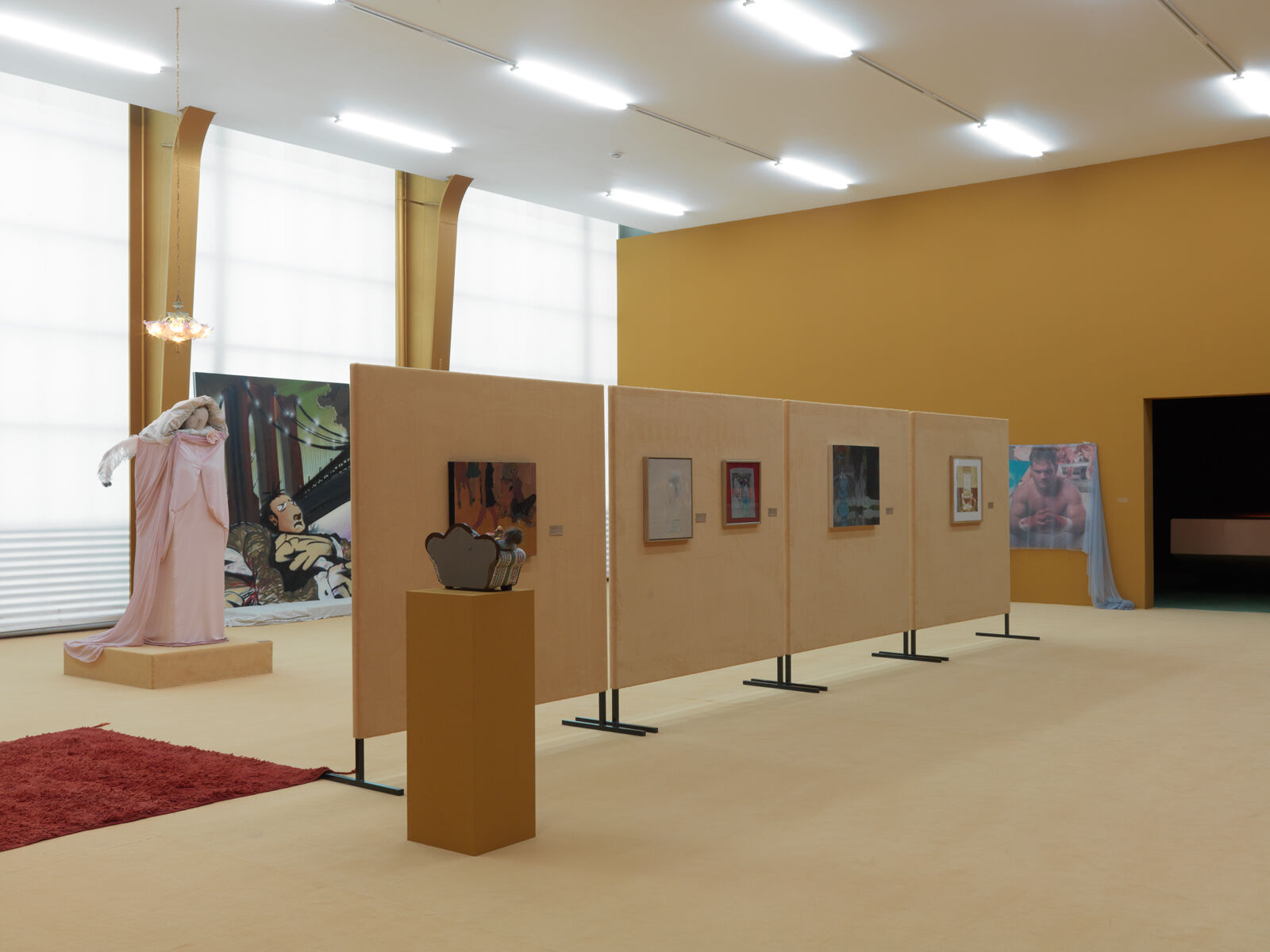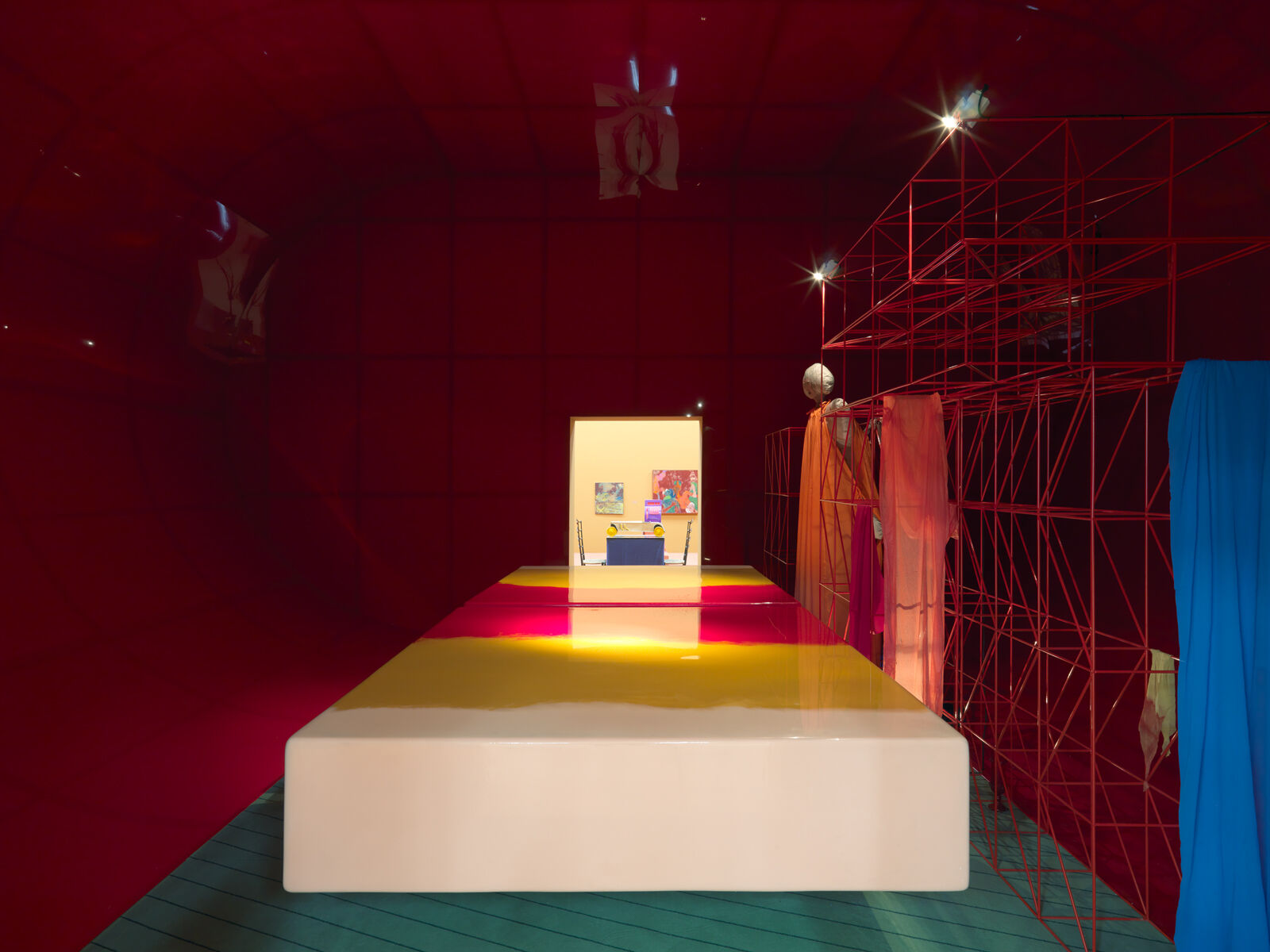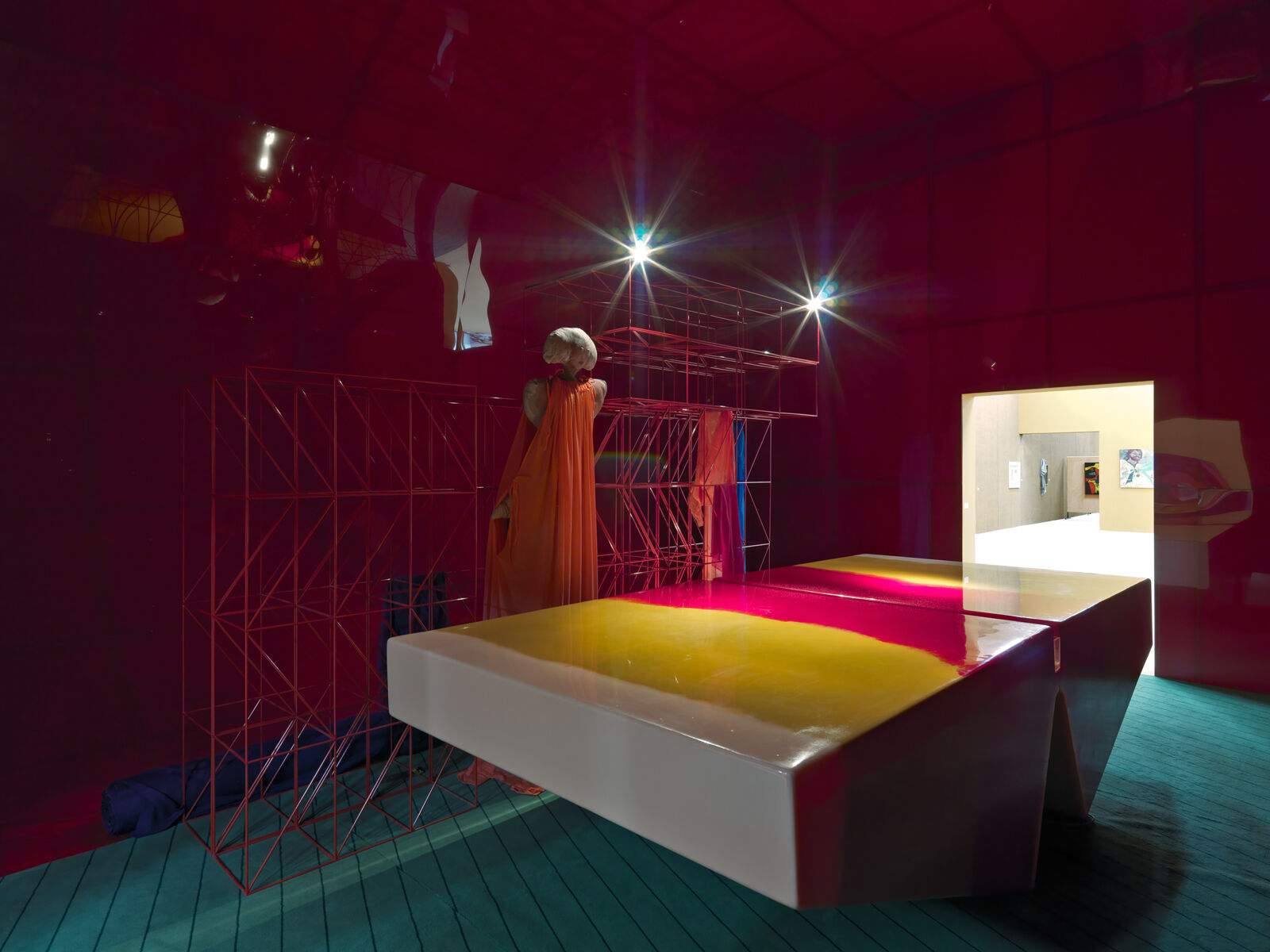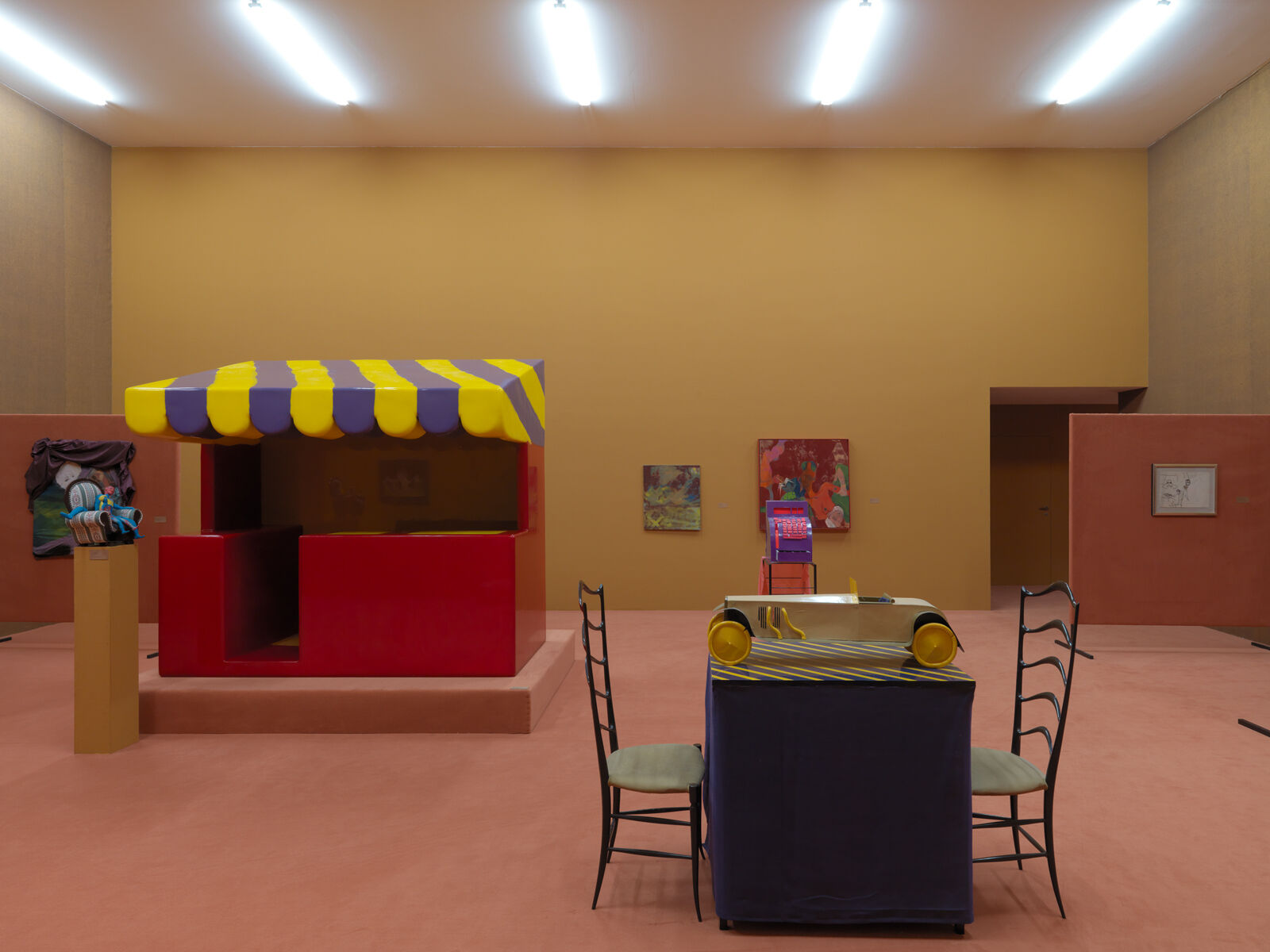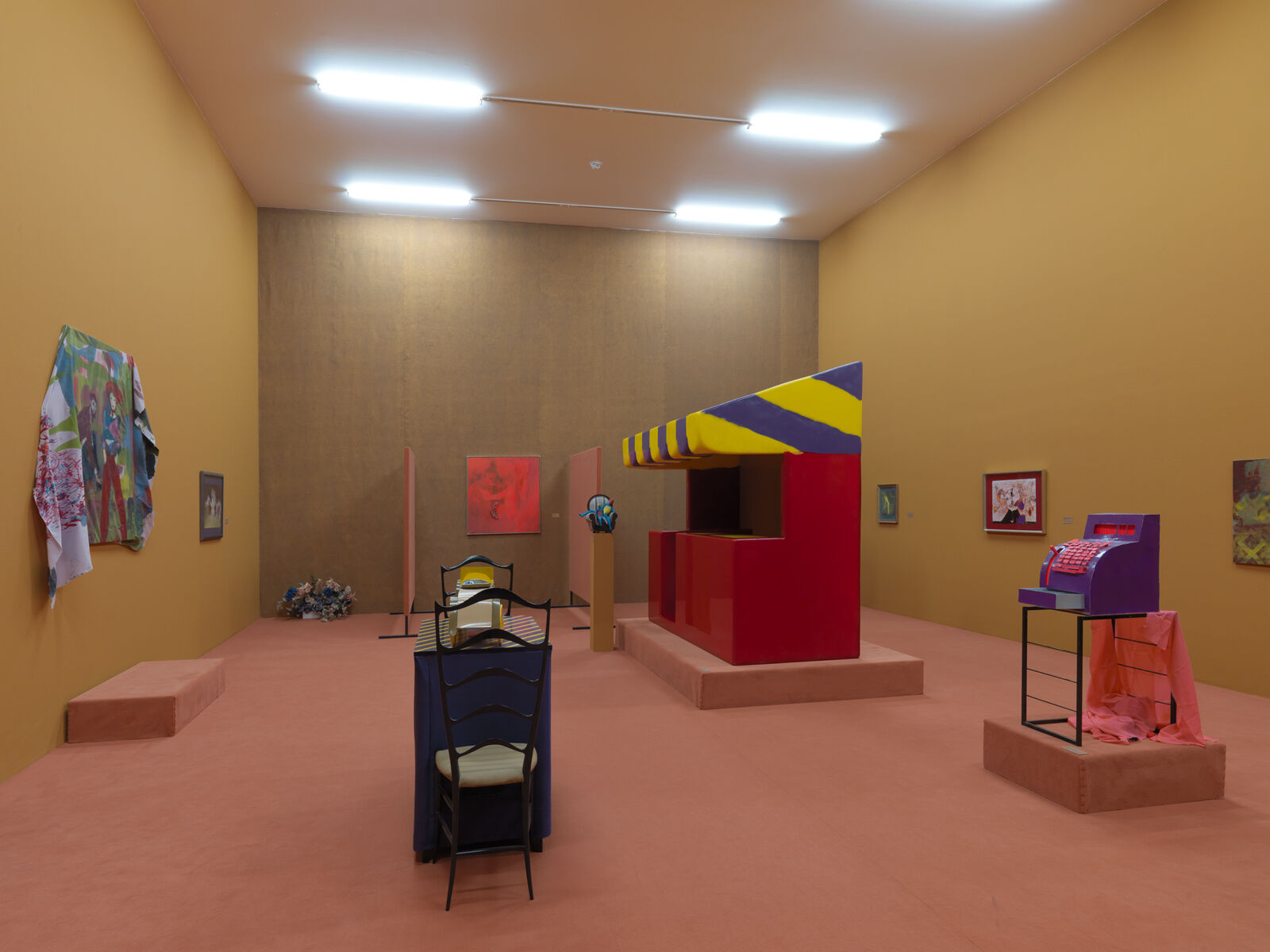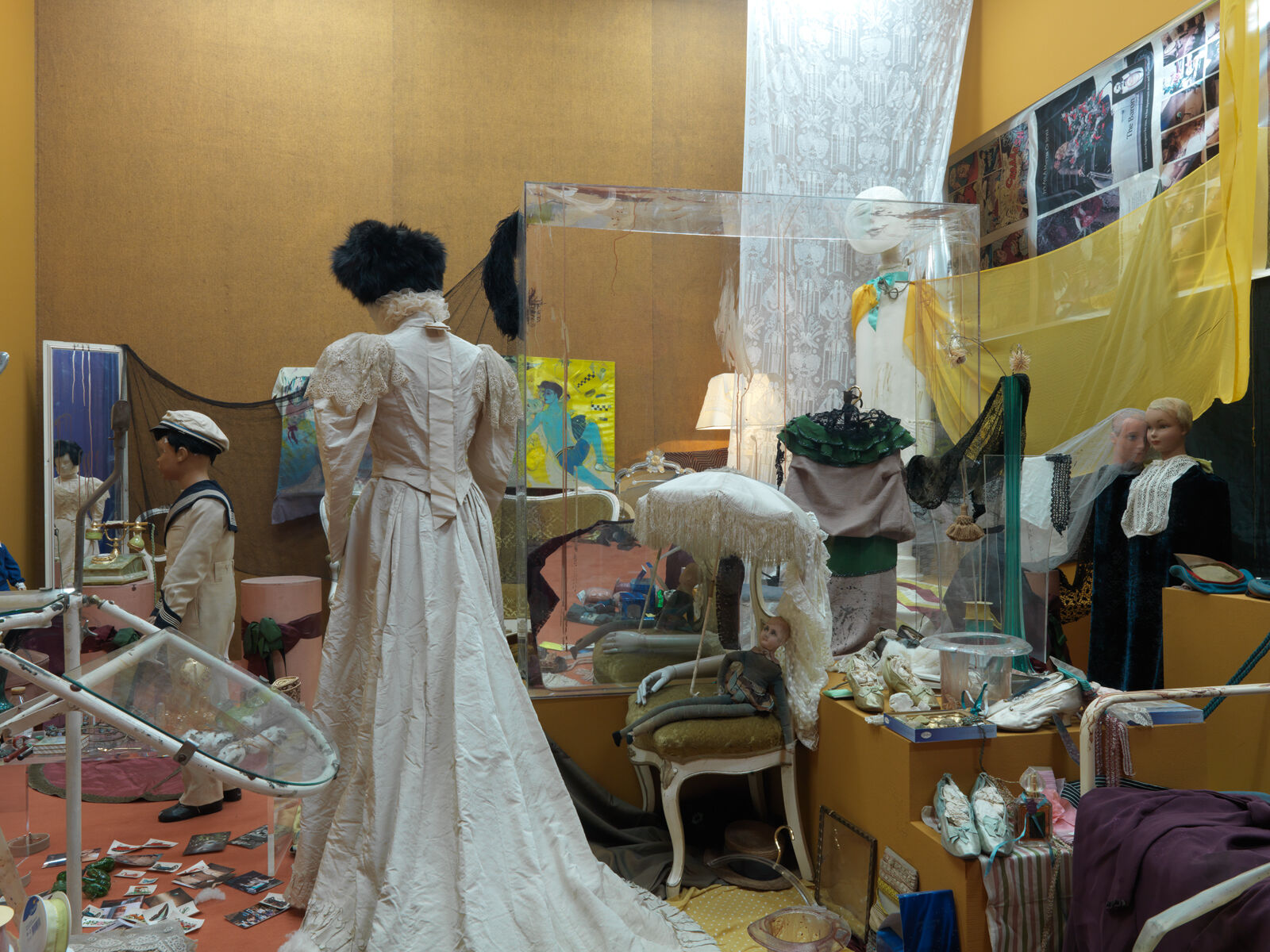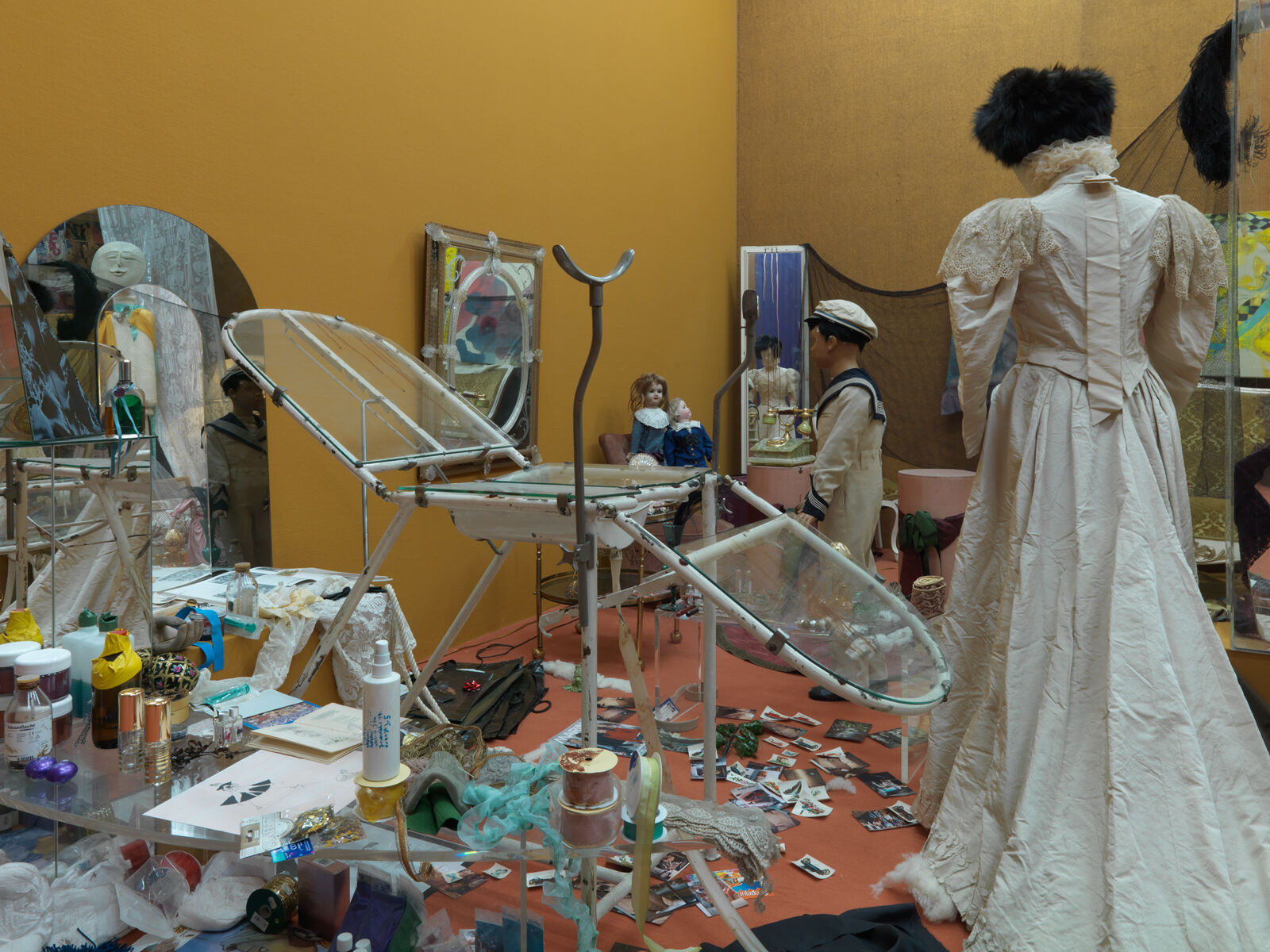Kai Althoff
In any case, I wish you ill
Kai Althoff (born in Cologne in 1966 where he lives and works) belongs to a young generation of German artists and is surely one of its most extraordinary representatives with a large international radius and significance. The exhibition at Kunsthalle Zürich represents the artist’s first solo project in Europe for a long time, while in Switzerland it is, in fact, his very first presentation.
Kai Althoff works with a broad spectrum of media, from sculpture via installation, film and photography, up to performance, music, graphic prints and book design. Narrative elements shape his work and make a personal, direct and inescapable demand on the viewers’ involvement. The artist’s place of presentation for his works is never a white cube, but always an all-encompassing locality that Kai Althoff has transformed into an area for a ‘private’ experience of his works composed of everyday materials: carpeting, wall hangings, draperies, partitions, atmospheric coloring, smells and intimacies. It is as if we were suddenly granted access to the long locked chamber of an individual obsession.
All Kai Althoff’s works are of a driven, ambivalent, historically as well as subjectively charged struggle between beauty and aggressivity, destruction and love, community and individuality, and pervaded by the present and both the factual and fictional deviations of memory. This conflict is inherent in all the works, especially in his masterly paintings and drawings, which impress us with their seductive contents and breathtaking compositional techniques that link periods and styles and transform – with harsh medial and material contrasts – their seemingly sentimental appearance into at times shocking objects that, as opposite players, always demand subjective emotions and an individual stance. Kai Althoff’s installations are proliferating cosmoses populated by images and things about human relations and social regulations. They show and make us experience how people within their bodies behave towards themselves, towards others and towards their surroundings. His realms of experience are filled, above all, with every possible beauty the world offers and the endless varieties of decoration and insignia of power with which individual man tries to position himself in the world – that is, with everything that accumulates on the surface of existence. This appears on the scene as something rotting and, at the same time, sentimentally and fragrantly beautiful, as a realm of reality that encompasses all the senses and envelops and entices the viewer, but can also lead to physical aversion (often ‘supported’ by smells, decomposing materials or aesthetic horrors that the artist has woven into the seductive aesthetic surface of his works).
The themes of Kai Althoff’s work are deeply rooted in the relation of the individual to the conditions and formulations of communal behavior, the rituals and codes of social life, its histories and its stories. The aesthetics and the confictual reality of his youth in 1970s West Germany come through again and again as the thematization of “physical, psychic or sexually connoted experiences of dominance, vulnerability and dubious morals” (catalogue: 2006 Berlin Biennale).
Whereby Kai Althoff’s work can be more profitably compared to the structure of dreams in which the chronology of the time in question and the identity of the protagonists are suspended. A precise categorization of political or historical periods is not what is meant. But we do encounter culturally stamped stylistic and thematic constants and identities that occur either as the up-and-down movements of cultural values (the transformation of aristocratic insignia into everyday bric-a-brac, for example) or as the survival of certain elements of a culture and society that function as niches for a handed-down set of regulations and have a latent and ongoing influence on our unconscious and thus on our conduct (such as the way political agitators or group forms from the Nazi era are integrated with no transition into postwar Germany and other societies).
Kai Althoff’s works revolve around fantastical, mythological and dream-like scenarios on the forms that friendship and sex relations take, the integration into dubious social groups such as religions, “Burschenschaften” (fraternities), political radicalism, the bourgeoisie or subcultures. Whereby Althoff holds out the prospect of communal forms as a utopian dimension and inquires into our behavioral norms regarding the significance of love, brotherly love, trust and the possibilities of individual freedom. This is not least expressed in his verbal productions and his work titles, which almost amount to a poetic, idiosyncratic vocabulary that contradicts the era’s conventions and constantly questions the understanding and communication of the individual with the society.
The exhibition at Kunsthalle Zürich is accompanied by the artist’s sentimentally melancholy image of the view out of an old house onto a wintry garden – and with a no less melancholy text parallel to the game rules of love. It makes a comprehensive survey of Kai Althoff’s oeuvre possible for the first time, with works from 1994 to the present. In the realm of experience created by the exhibition’s extensive installation In any case I wish you ill (German title: Ich meine es auf jeden Fall schlecht mit ihnen), works from the 1994 exhibition Uwe: Auf guten Rat folgt Missetat (Cologne, 1994) are linked to works from more important exhibitions, such as Vom Monte Scherbelino Sehen (with Abel Auer, Diözesanmuseum Freising, 2003), IMMO (Simultanhalle, Cologne-Volkhoven, 2004), the installation Solo für eine befallene Trompete (with Lutz Braun, ACME, Los Angeles, 2005), ensembles from Kolten Flynn, (with Lutz Braun, Berlin Biennale, 2006) and the exhibition We Are Better Friends For It (with Nick Z., Gladstone Gallery, New York, 2007). These Kai Althoff has topped off with many works from collections and private owners and works that he developed specifically for Kunsthalle Zürich.
For the occasion a catalogue is available with a text by Maxwell G. Graham on the exhibition, an introduction by Beatrix Ruf and countless illustrations. The catalogue will be published by JRP|Ringier Buchverlag with an international distribution.
Kunsthalle Zürich thanks: Präsidialdepartement der Stadt Zürich, Luma Stiftung, Stiftung Deutsche Bank, ifa Institut für Auslandbeziehungen
